QCF: The Atari VCS
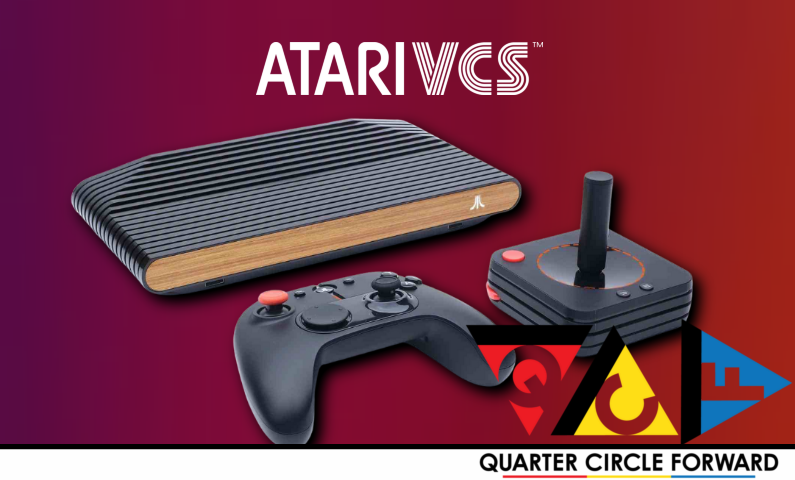
 he 1970’s were famous for a lot of things: the birth of whole entire music genres that ranged from Disco to Punk Rock, the Watergate scandal, and a certain living room pastime that would go on to change the entertainment medium forever—Video Games. It wasn’t long before these interactive television media programs made their way from the arcades to households across the country in the latter half of the Seventies, all thanks in part to a certain company that would help pioneer the blooming industry, Atari.
he 1970’s were famous for a lot of things: the birth of whole entire music genres that ranged from Disco to Punk Rock, the Watergate scandal, and a certain living room pastime that would go on to change the entertainment medium forever—Video Games. It wasn’t long before these interactive television media programs made their way from the arcades to households across the country in the latter half of the Seventies, all thanks in part to a certain company that would help pioneer the blooming industry, Atari.
Years removed though, the Atari brand is seen as nothing more than a relic after its rise, and gradual fall—clinging on to nothing more than nostalgia for the remaining players who remember those early generations in their prime and get excited at the mention of the name. While the Atari line has enjoyed a second life in the aftermarket with a booming homebrew market and enthusiast media scene that’s fostered on by platforms like AtariAge and AtariMania, the company itself has gone mostly dormant through a series of mergers and extensions before quietly filing for bankruptcy in 2013.
Since then, the remnants of Atari, now named Atari SA have carried on with splintered releases of the remaining IPs in their possession like RollerCoaster Tycoon and Lunar Lander for the PC and mobile markets. The output was modest, as R&D worked on various projects while the company continued to earn royalties from its licensing deal with AtGames and their Flashback line of plug-in consoles. Sometime in 2017, however, a new management recruit by the name of Feargal Mac Conuladh was able to greenlight plans for a new Console-PC hybrid with an exclusive digital storefront codenamed the Atari Box. After years of sparse communication on the project and questionable crowdfunding campaigns to finish the production of the console, the Atari VCS has now officially launched to the public.
The question remains as to whether or not Atari can deliver on a product that can offer more than a fleeting sense of nostalgia that’s arguably just too dated to enjoy again. From my time spent with the machine, my answer isn’t as cut and dry as I would have ideally liked it to have been. I think the potential for the Atari VCS to deliver a different gaming experience is certainly there, especially when comparing it to contemporary upstarts that came before it like the Ouya and GameStick, who both originally promised something very similar and ultimately failed to live up to that promise. A number of shortcomings in the unit’s overall performance, however, unfortunately holds that potential, back and Atari’s subsequent management of the platform leave a sizable bit more to be desired. The VCS has too much running against it in the face of its low-end price point of $299.99 for just the base console without controllers, and the higher $399 asking price for the system and controller bundle—with the low-end being the same retail cost of a Nintendo Switch.
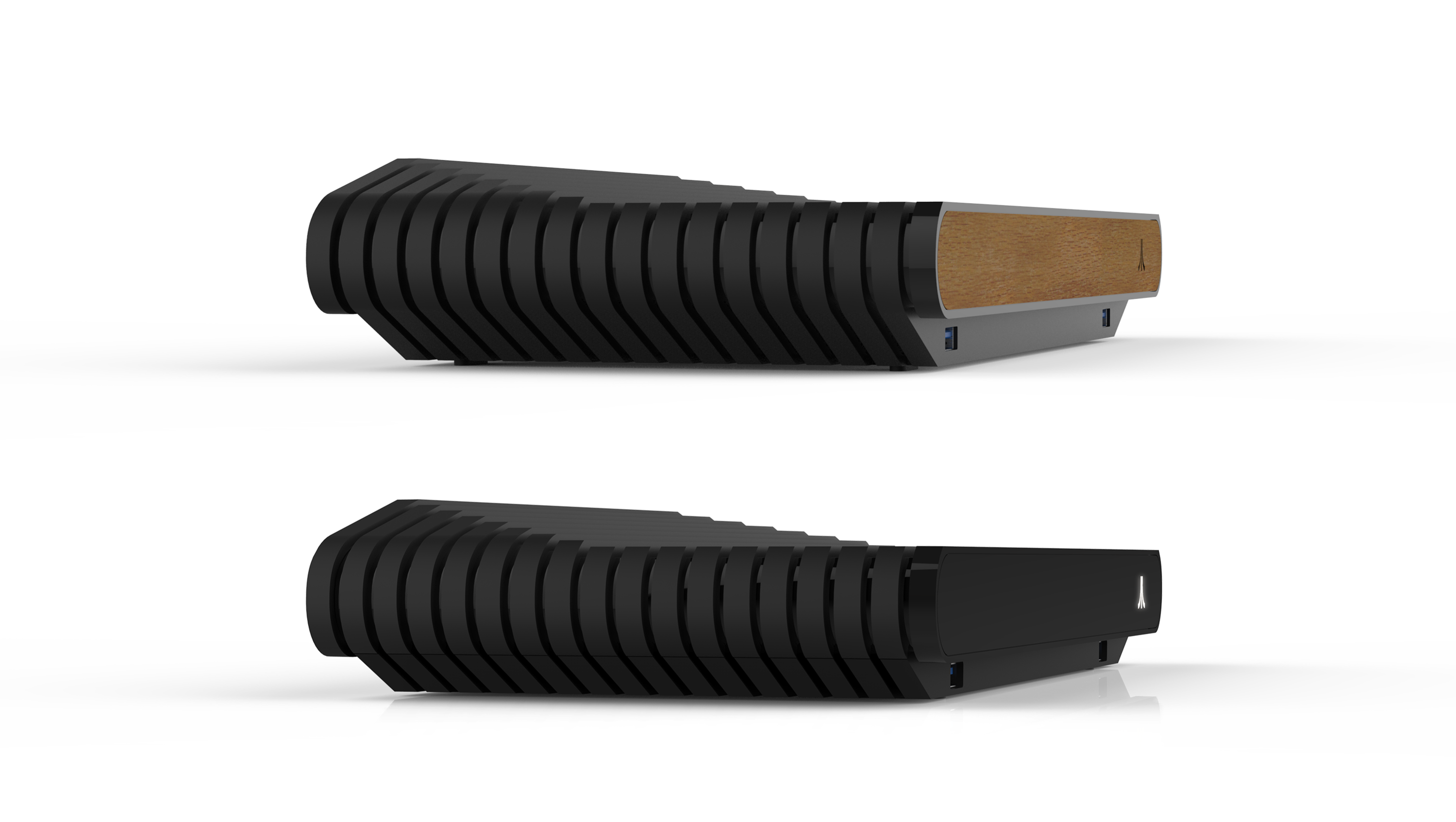 Before getting into the nitty-gritty of evaluating a new console where it really counts, I want to take a brief moment to praise the system for something that’s seemingly more overlooked with each new generation of console gaming—the cosmetic design of the Atari VCS, because yeah—this little machine is just gorgeous to look at on your media center. Modernizing the vented dashboard foundation of the original Atari 2600, the Atari VCS retains its identity with a unique look that achieves the right balance of electronic minimalist chic and stand-out branding. The VCS even brings back the concept of swappable faceplates, a gimmick that Microsoft only got so far with for Xbox 360, but just makes so much more sense on a system that’s succeeding a unit famous for its iconic frontal veneer of wood and alabaster black finish. Looking at the system’s specs under a microscope, while the system can certainly beat them in a beauty contest the console doesn’t come anywhere near the Sony PlayStation 5 or Microsoft Xbox Series X. Nonetheless, for what it is, the Atari VCS surprisingly packs a bit of punch under its hood.
Before getting into the nitty-gritty of evaluating a new console where it really counts, I want to take a brief moment to praise the system for something that’s seemingly more overlooked with each new generation of console gaming—the cosmetic design of the Atari VCS, because yeah—this little machine is just gorgeous to look at on your media center. Modernizing the vented dashboard foundation of the original Atari 2600, the Atari VCS retains its identity with a unique look that achieves the right balance of electronic minimalist chic and stand-out branding. The VCS even brings back the concept of swappable faceplates, a gimmick that Microsoft only got so far with for Xbox 360, but just makes so much more sense on a system that’s succeeding a unit famous for its iconic frontal veneer of wood and alabaster black finish. Looking at the system’s specs under a microscope, while the system can certainly beat them in a beauty contest the console doesn’t come anywhere near the Sony PlayStation 5 or Microsoft Xbox Series X. Nonetheless, for what it is, the Atari VCS surprisingly packs a bit of punch under its hood.
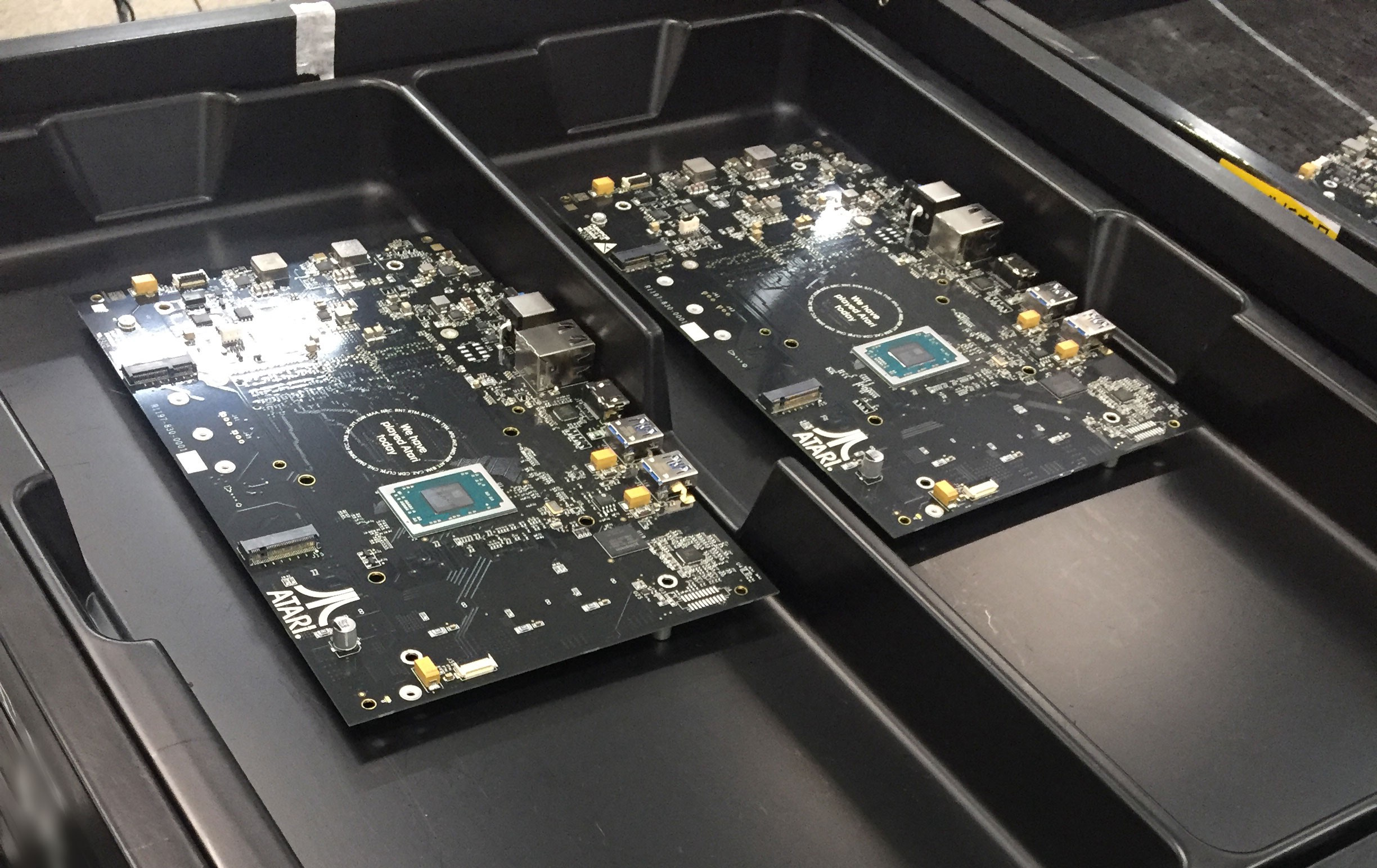 For starters, The OS is a custom Linux kernel that operates the console mode of the unit, with the option to integrate all current computer OS options available for the PC mode. The Atari VCS operates on fully digital infrastructure, requiring the registration of at least one account, where any registered user would have access to the Home Dashboard and Atari’s Marketplace. As of now, there’s no clear online user network that’s defined other than software-specific leaderboards, which have yet be made active. It’s a bit strange that Atari has been so silent on the subject. The console has already hosted some online options during the Early Access period with access to a few titles that offer Online Multiplayer like Utopos, a game that uses a dynamic Lobby system for the matches it runs, seems to be the MO for any Online Multiplayer for its games.
For starters, The OS is a custom Linux kernel that operates the console mode of the unit, with the option to integrate all current computer OS options available for the PC mode. The Atari VCS operates on fully digital infrastructure, requiring the registration of at least one account, where any registered user would have access to the Home Dashboard and Atari’s Marketplace. As of now, there’s no clear online user network that’s defined other than software-specific leaderboards, which have yet be made active. It’s a bit strange that Atari has been so silent on the subject. The console has already hosted some online options during the Early Access period with access to a few titles that offer Online Multiplayer like Utopos, a game that uses a dynamic Lobby system for the matches it runs, seems to be the MO for any Online Multiplayer for its games.
Unfortunately, it’s too early to tell if the lack of a uniform network that’s moderated by Atari is a knock against the system. Giving developers the autonomy to oversee online functionality for their game no matter how big or small they be is definitely a win for indie games that would normally struggle with all the red tape elsewhere. But history has also shown us that putting the onus of online management entirely upon the publisher and developer increases the likelihood of abandonment for the feature in that game altogether.
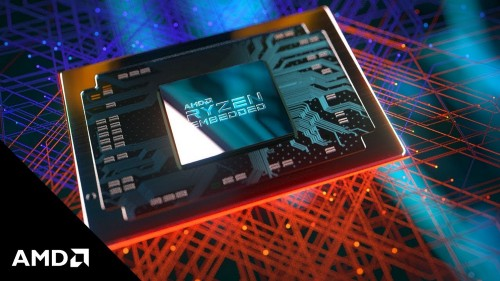 Moving past the frontend, the architecture of the hardware’s GPU and APU are engineered by AMD, with the GPU being powered by its Ryzen line, and processing handled by the Raven Ridge 2. To break it down simply, the components of the VCS put it just under par with the Nintendo Switch in terms of overall CPU performance, and even a slight edge against its AMD architecture in terms of resolution and fidelity. In fact, aside from two exclusive titles, a majority of the software available for the Atari VCS are titles that are currently available on both the Nintendo Switch, and Steam respectively, operating more or less the same, or in some instances, better than their Switch counterpart. Among the dozen or so games I acquired for the unit, the only port that didn’t quite live up to its mainline counterparts was Danger Scavenger, which seemed to struggle from unstable controller responses and dropped resolutions. It’s a shame too, because it’s the only version that has additional content that’s exclusive to the VCS version, like Atari-themed content and extra character unlocks. To be fair, the theme of inconsistent performance from the VCS admittedly runs deeper than any software-optimization issues could rationally explain away.
Moving past the frontend, the architecture of the hardware’s GPU and APU are engineered by AMD, with the GPU being powered by its Ryzen line, and processing handled by the Raven Ridge 2. To break it down simply, the components of the VCS put it just under par with the Nintendo Switch in terms of overall CPU performance, and even a slight edge against its AMD architecture in terms of resolution and fidelity. In fact, aside from two exclusive titles, a majority of the software available for the Atari VCS are titles that are currently available on both the Nintendo Switch, and Steam respectively, operating more or less the same, or in some instances, better than their Switch counterpart. Among the dozen or so games I acquired for the unit, the only port that didn’t quite live up to its mainline counterparts was Danger Scavenger, which seemed to struggle from unstable controller responses and dropped resolutions. It’s a shame too, because it’s the only version that has additional content that’s exclusive to the VCS version, like Atari-themed content and extra character unlocks. To be fair, the theme of inconsistent performance from the VCS admittedly runs deeper than any software-optimization issues could rationally explain away.
When it comes to raw horsepower that’s powering the setup, the Atari’s micro-console stumbles hard out of the gate.
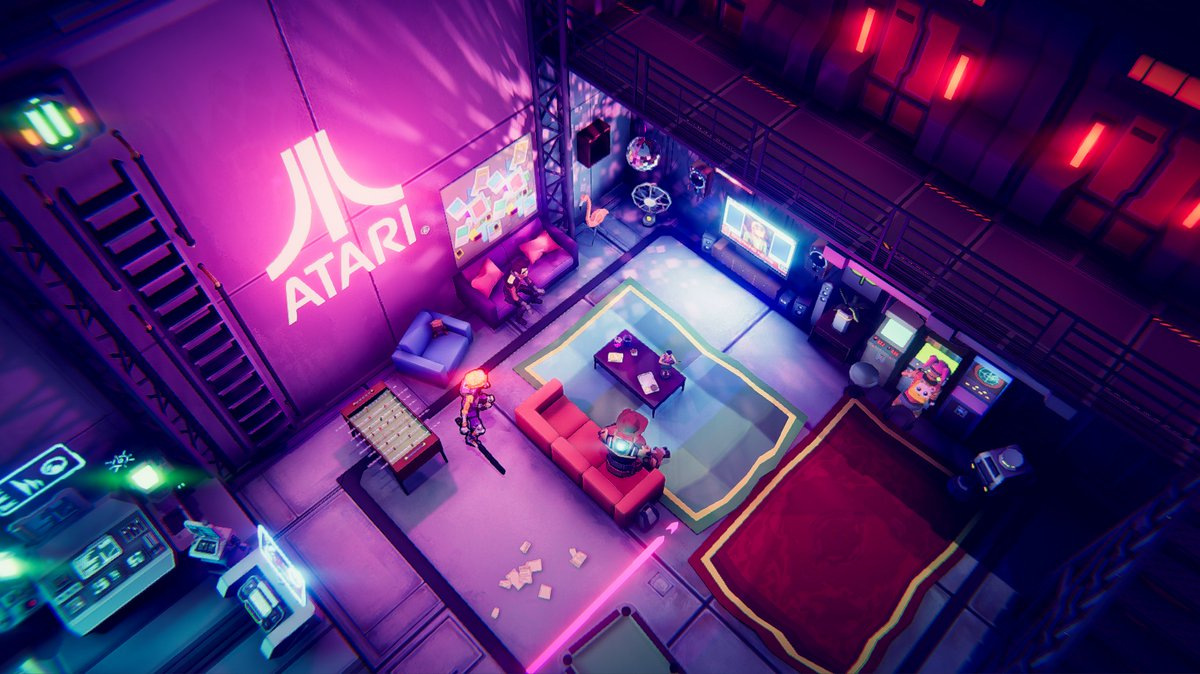
The VCS boasts the ability to stream gameplay and videos at 4K quality resolution—features that the system had unfortunately failed to properly optimize at even the most basic levels. Setting aside the fact that the current selection of games doesn’t even utilize 4K output, switching the VCS into this resolution drastically cuts down the system’s processing performance, going as far as to not only everything down to 30 FPS, but also increases the likelihood of a full-on system crash. Examining the system even deeper, a potential factor for this may lie in the fact that of the 8GB RAM, 2GB is automatically used for the 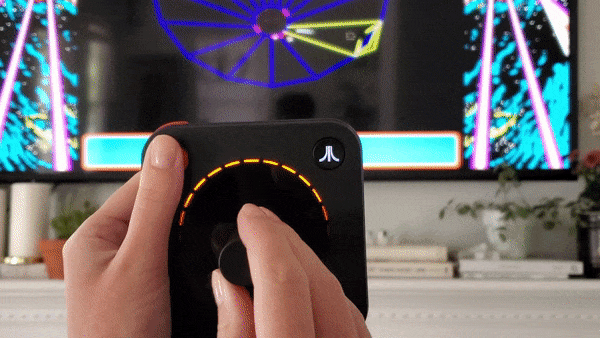 operation of GPU, with less memory to work with as opposed to GPU operating with a dedicated memory system for it. The sluggish output even carries over to the video streaming services integrated into the VCS like Twitch, and Netflix, where video quality can either frequently drop in and out, or hit multiple buffering bumps, regardless of your internet speed. Also, I would be remiss to mention that intensive operation on the VCS will push the fan to its limits, and this thing is loud, like, we’re talking a Dreamcast-tag-teaming-with-a-first-generation-Xbox-360 kind of loud. While this may or may not be an issue for you depending on your sensitivity to white noise, the fact that the VCS doesn’t have any performance settings to better configure what kind of stress is put on to it is a bit disappointing, to say the least.
operation of GPU, with less memory to work with as opposed to GPU operating with a dedicated memory system for it. The sluggish output even carries over to the video streaming services integrated into the VCS like Twitch, and Netflix, where video quality can either frequently drop in and out, or hit multiple buffering bumps, regardless of your internet speed. Also, I would be remiss to mention that intensive operation on the VCS will push the fan to its limits, and this thing is loud, like, we’re talking a Dreamcast-tag-teaming-with-a-first-generation-Xbox-360 kind of loud. While this may or may not be an issue for you depending on your sensitivity to white noise, the fact that the VCS doesn’t have any performance settings to better configure what kind of stress is put on to it is a bit disappointing, to say the least.
Getting back to the subject of Internet speeds, this is one area where the unit excels, sporting WiFi 802.11 and Gigabit Ethernet connectivity that’s capable of simultaneous background downloads during any streaming or program operation. There were many instances where the VCS received full-on updates in the background that I didn’t even notice had it not been for the inconspicuous alert on the dashboard, allowing me to play on the system without a single hitch. I can’t say the same thing about the system’s Bluetooth capabilities though—it’s easily the most busted thing about the hardware.
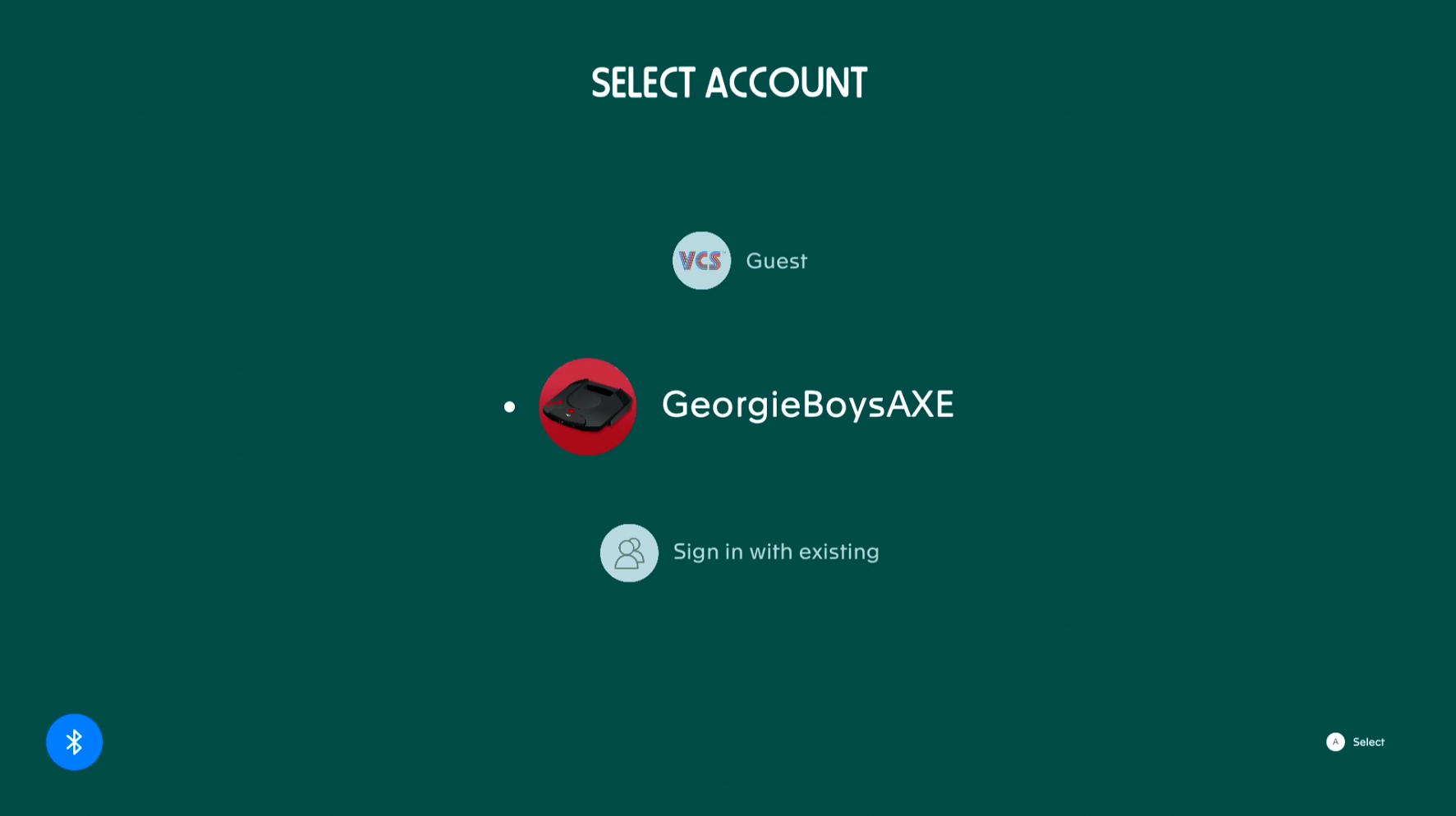
Never, and I want to empathize this with my 25 years-plus worth of experience with wireless crap like the NEC PC Engine Cordless Pad or the Doc Wireless Line for the Nintendo 64 and original PlayStation, neeeh-heeh-heveerr, had so many issues connecting a wireless controller as I have with the Atari VCS. The system has two controller variations, the Modern Controller, and the Classic Joystick, and both capable of connecting to the VCS wirelessly via Bluetooth 5.0 service by pressing down and holding the Menu button on either controller and yet, doing so seems to be far much easier said than done. Without any rhyme or reason, regardless of physical distance from the base unit or the length of time the Menu button is held, I have often found myself helpless at the login screen, with a blinking Bluetooth logo on my television screen, and no clear sign of the VCS detecting my efforts to pair the damn controller in sight.
Even when you do manage to successfully connect the damn things to the console, most of the button functionality or mapping is borked the moment you boot a game up. Take Mission Command Recharged, a title that’s been optimized for the new Wireless Classic Joystick for the system—if imitated while the controller is pair wirelessly, your aiming reticle will veer wildly to the left without any way to control it, as if it held there by an invisible force that’s registering a phantom input all on its own.
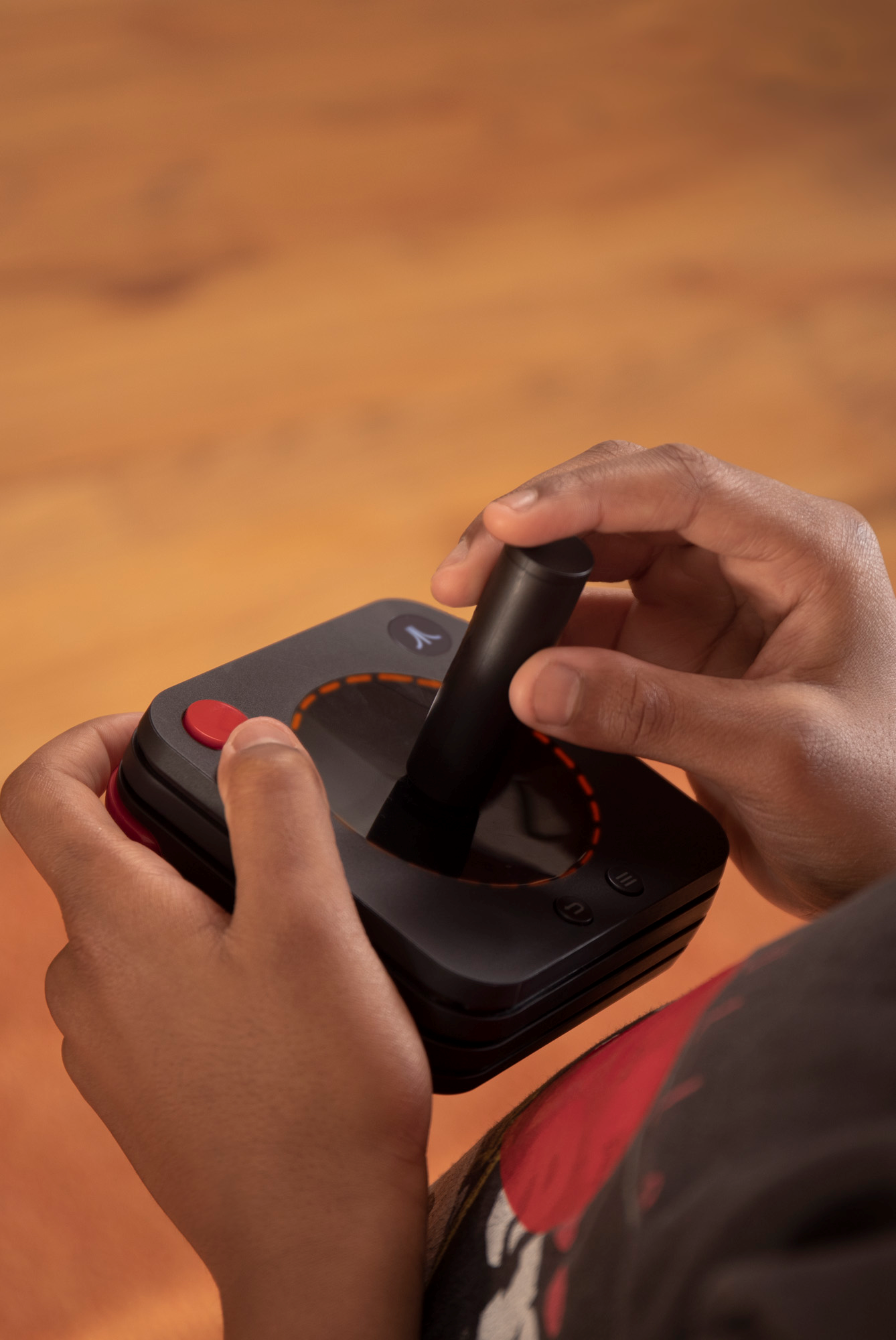 Factoring the PC logic of the hybrid console, it begs the question as to whether or not Atari is using some sort of custom Joy2Key command for the wireless system of its controllers as the console is compatible with several other Bluetooth controllers. The available options I had to try were the Xbox One, Xbox 360, Dualshock 4 controllers, and even the Switch and Wii U Pro controllers of you have any of those handy. Thankfully, all of the aforementioned issues with connectivity and responsiveness only occur with a wireless connection, when connected by the included USB cable, the controllers function exactly as they should. Still, this sort of thing is flat out inexcusable, especially in the year 2021, and the fact that Atari hasn’t deployed a resolution to this post-launch is almost more bizarre than it is maddening. It’s a little hard to believe that they weren’t aware of the issue from the early stages of the system’s R&D when each controller comes conveniently packaged with a USB cable that’s over 10 feet long…
Factoring the PC logic of the hybrid console, it begs the question as to whether or not Atari is using some sort of custom Joy2Key command for the wireless system of its controllers as the console is compatible with several other Bluetooth controllers. The available options I had to try were the Xbox One, Xbox 360, Dualshock 4 controllers, and even the Switch and Wii U Pro controllers of you have any of those handy. Thankfully, all of the aforementioned issues with connectivity and responsiveness only occur with a wireless connection, when connected by the included USB cable, the controllers function exactly as they should. Still, this sort of thing is flat out inexcusable, especially in the year 2021, and the fact that Atari hasn’t deployed a resolution to this post-launch is almost more bizarre than it is maddening. It’s a little hard to believe that they weren’t aware of the issue from the early stages of the system’s R&D when each controller comes conveniently packaged with a USB cable that’s over 10 feet long…
Speaking of the controllers; despite the connectivity issues, their design-build and utility are among some of the best paddles I’ve played with in years—especially the Wireless Classic Joystick.
The Wireless Classic Joystick, a modern revamp of the 2600’s trademark Joystick that sports a load of enhancements over its predecessor, revitalizing the very same retro games it was created for. Unlike the eight-way output of the original, the Wireless Classic Joystick features full 360 directional control, with the added affectation of dynamic lighting for the trademark orange analog ring for an admittedly awesome effect. Easily the coolest feature that the Wireless Classic Joystick offers however is the Rotary control for games that optimized this unique control mechanic like Tempest, Pole Position, and Breakout. The Joystick itself is what’s used for the rotation, and the tactility of the twisting circumference is incredibly intuitive, and may possibly be one of the best rotary control options ever available. Beyond the Atari VCS vault compilation support, the potential for the Joystick to be optimized for modern software is one of the best-selling points for the VCS. Games like Jetboard Joust, a Defender-inspired Rouge-like shooter that offers a specific calibration for the Wireless Classic Joystick that can’t be experienced on any other version, adding that much more to the Midway classic inspired gameplay it pays tribute towards.
The Modern Controller isn’t as special, but it’s certainly serviceable. The controller has the ergonomics of the Xbox One controller with the same thumbstick design, Shoulder button layout, and convex face buttons sans the heavier feel of Microsoft’s paddle. The biggest difference is the D-Pad, and surprisingly, it works a lot better than initial impressions of its cross-less face design would imply. Upon closer inspection, the D-Pad has an inverse build to that of SEGA variant of a Cross on a Disc, using a slightly concave disc propped up Cross instead. Putting the D-Pad through its paces with the white-knuckle platformers available on the VCS like Sir Lovelot, Unsung Warriors-Prologue, and Frog Hop yield satisfactory results with input that was responsive and reliable in comparison to the D-Pads on other contemporary controllers.
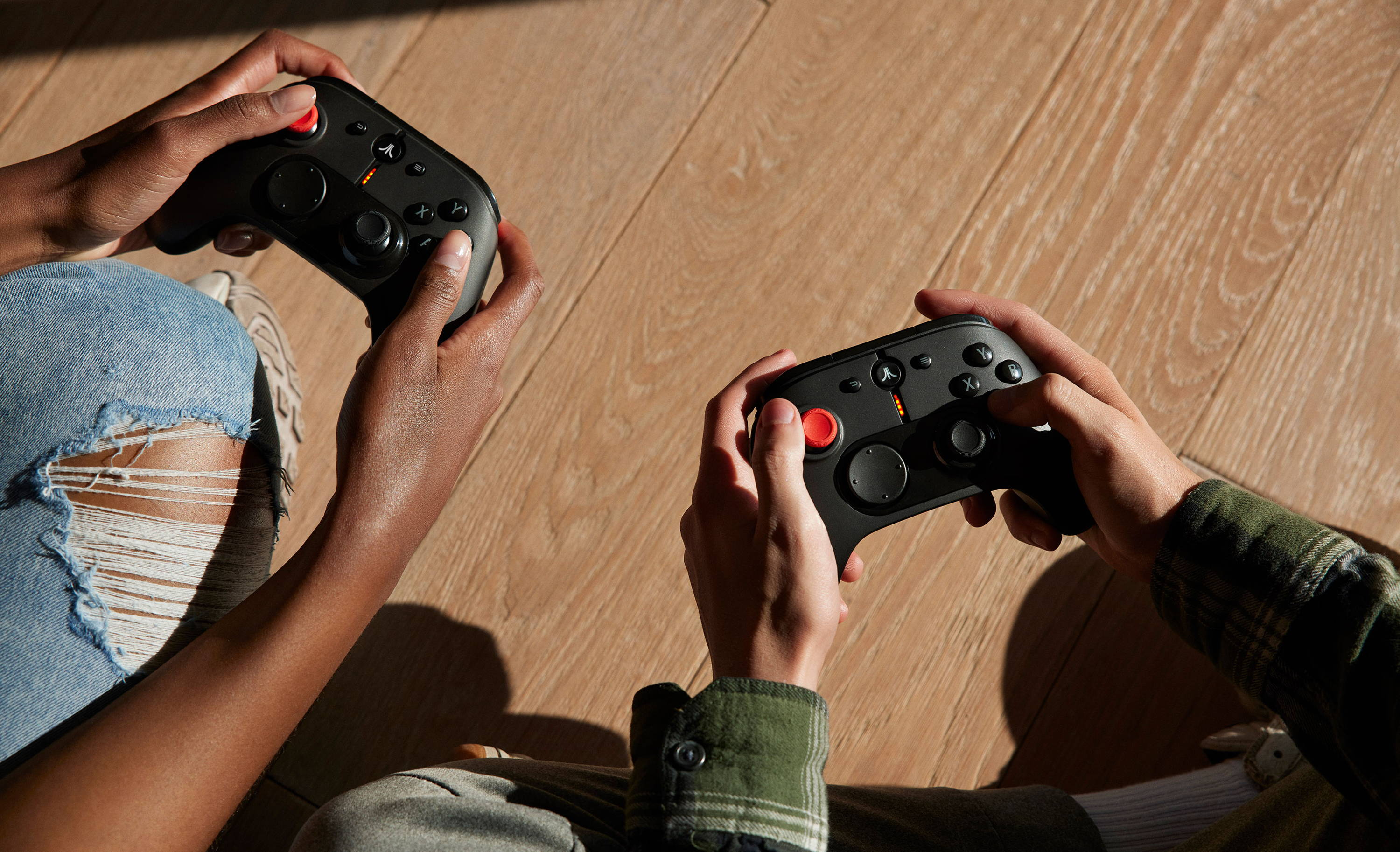
The design and utility of the controllers are easily the technical highlights of the VCS experience but dollars to doughnuts does the broken pairing setup sure take all the piss out of using them. Playing a modern console with a wired controller setup in the year 2021 is totally indefensible—hell, it’s almost asinine to play a retro console with a wired controller at this point thanks in large part to Retrobit and 8BitDo.
You may have noticed that I mentioned a number of games throughout the review—these were titles that I purchased from the VCS Store during my time with the unit, and the selection as of now is…mostly OK, but nothing that especially defines the Atari VCS against the rest of the herd.
As it stands now, there are currently 24 titles available as of now, with only three of them being exclusive to the VCS; Atari VCS Vault Vol 1, Atari VCS Vault Vol 2, and Guntech, a new title specifically developed for the system that’s spun off of the Atari ST cult-classic, Utopos. Navigating the store certainly brings back Ouya vibes, as there’s plenty of variety between some of the smaller games that are able to enjoy far market prominence than they would on Nintendo’s or Valve’s digital storefront, but the appeal of an indie-driven bastion needs a little more punch in 2021 than it did in 2013. Although these titles have a bigger spotlight on the VCS, they’re still readily available anywhere else on hardware that consumers most likely own already without the need to plunk down a few hundos’ to play them. In this current climate of accessibility, smaller developers can’t afford to narrow down their release to something that’s admittedly as niche as the Atari VCS. Setting that unfortunate reality of the situation aside, however, there’s still plenty of reason to keep the VCS on your radar when it comes to the software on it, and the platform is still a significant boon to indie developers everywhere.
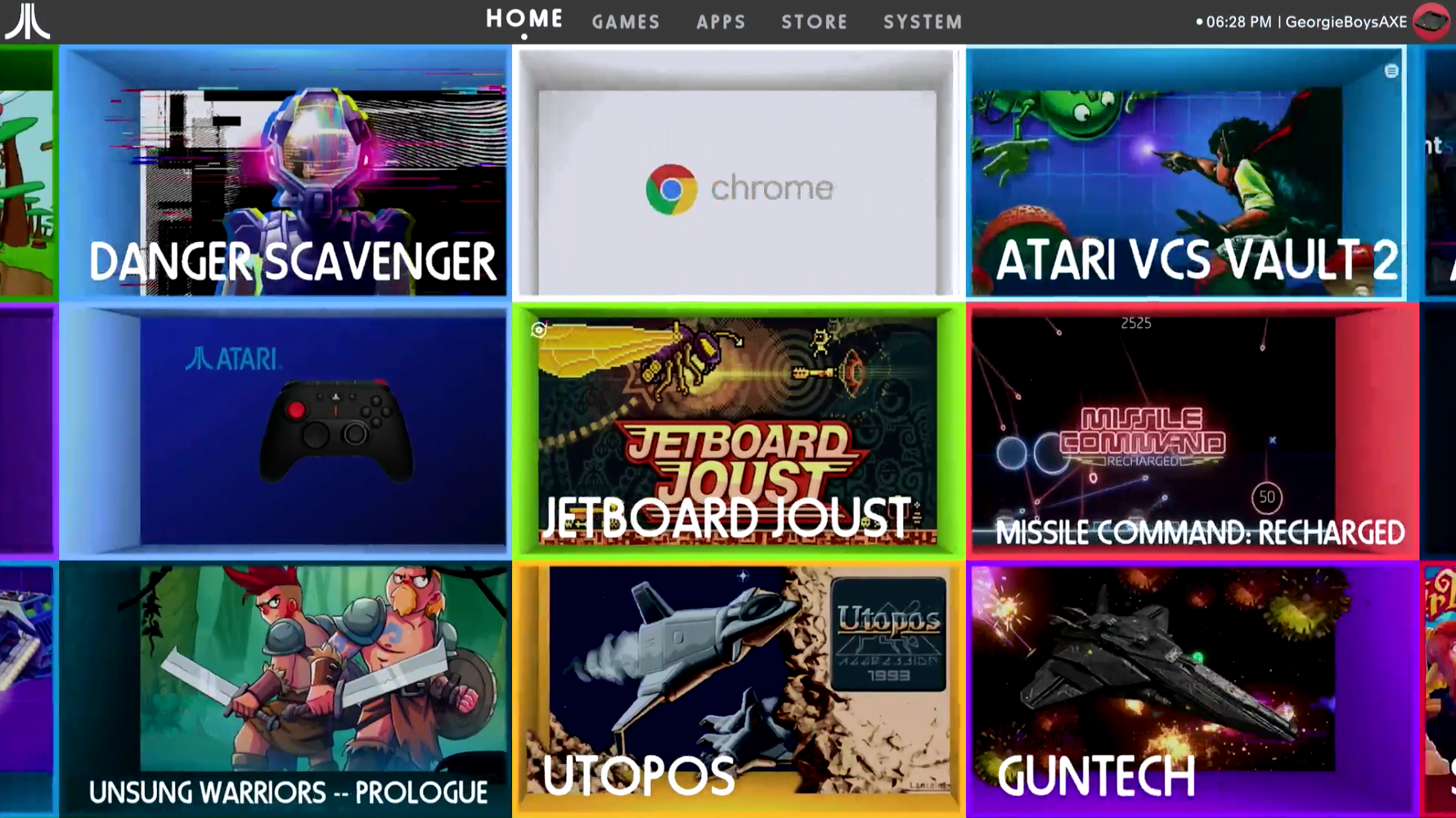
The VCS is an almost self-contained development kit like the Ouya was, with the only exception being a proprietary OS that Developers can use for various tooling and debugging access for dynamic development. The biggest difference between the micro-consoles is that the Linux-driven architecture of the VCS isn’t just limited to the Android variant of the Operating Software like the Kickstarter darling was, giving players and developers far more flexibility to stretch the open-source capabilities the system has to offer. In a brief interview I had with Jani Penttinen, lead developer behind the Atari VCS exclusive Guntech, I spoke with him regarding his experience with publishing and curating his title on the VCS, and the developer had positive things to say about the process. “Publishing is easy, I just submit the binaries to Atari and the update appears in the store a few days later (or, if it's critical, the next day.) For example the upcoming Guntech 2.0 update, I'll send it to them and they will release it when it suits them because it's not a critical update, but If it was a crash bug fix or an update that is required for cross-platform compatibility (as is often the case with Utopos), they'd rush it out ASAP.” Additionally, Pentinen concluded that his experience with development and publishing with Atari has been a positive one so far, and feels that they have been really easy to work with, and flexible with any requests that he has had.
In addition to the ease of development and subsequent publishing, there are plenty of games that can still optimize features and content for their titles on the VCS without all the red-tape that comes with certifying updates for their game on those other spaces. We’re already seeing it now with the new Atari-exclusive content on Danger Scavenger, and other games that would be apt for Wireless Classic Joystick optimization like Jetboard Joust and Mission Command Recharged have already redefined their gameplay with this unique control method—the potential is most certainly there.
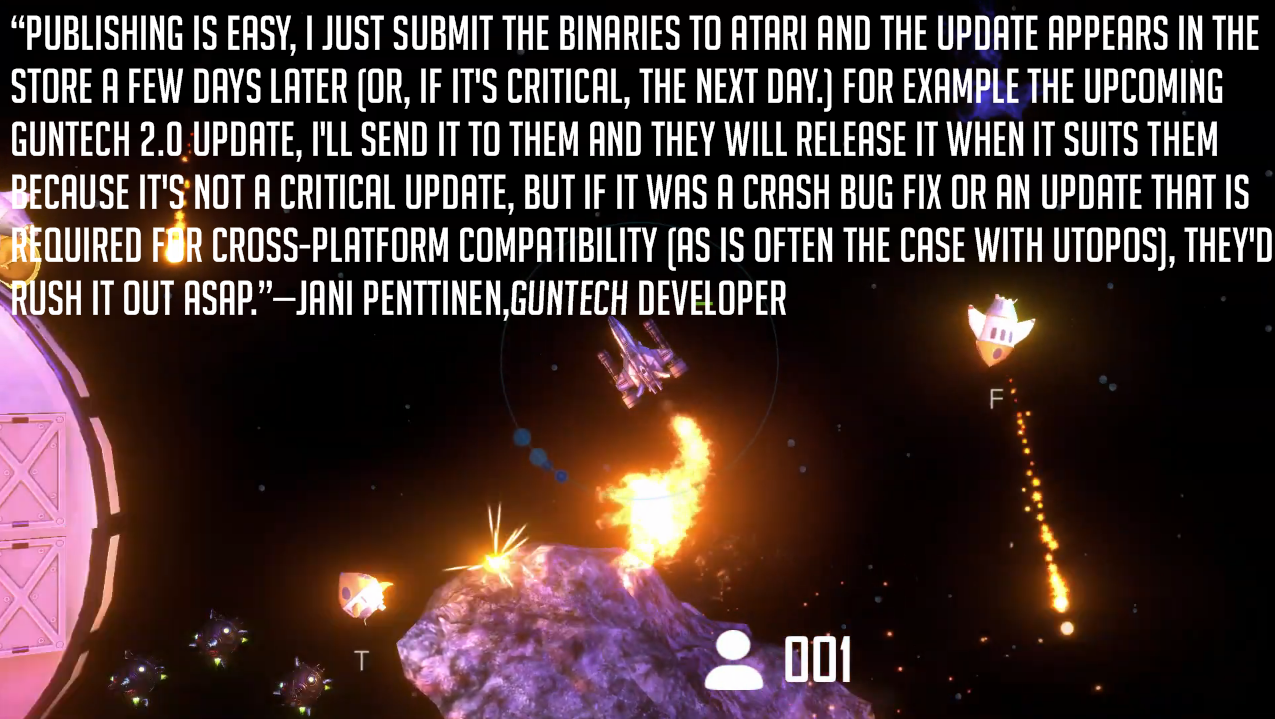
Guntech is a great title for the system, and is deceptively deep for a title that wears its love for Asteroids proudly upon the sleeve of its gameplay, but it’s far from being the Killer-App that justifies the console’s steep price point. Code Mystics did an incredible job with the VCS Vault Volumes, accurately reproducing many of the cult-favorites Atari still owns the rights to like Tempest and Crystal Castles in both their Arcade version, and the 2600 ports that make excellent use of the Wireless Classic Joystick. However, these titles are already available through more accessible means, and the added technical flourishes just aren’t enough of a difference-maker. In addition to the native releases, Atari has also partnered up with AntStream Arcade and Gamejolt to offer special apps that allow access to their games-on-demand service, with Antstream currently being available to play now with a bundled 30-day trial to their service.
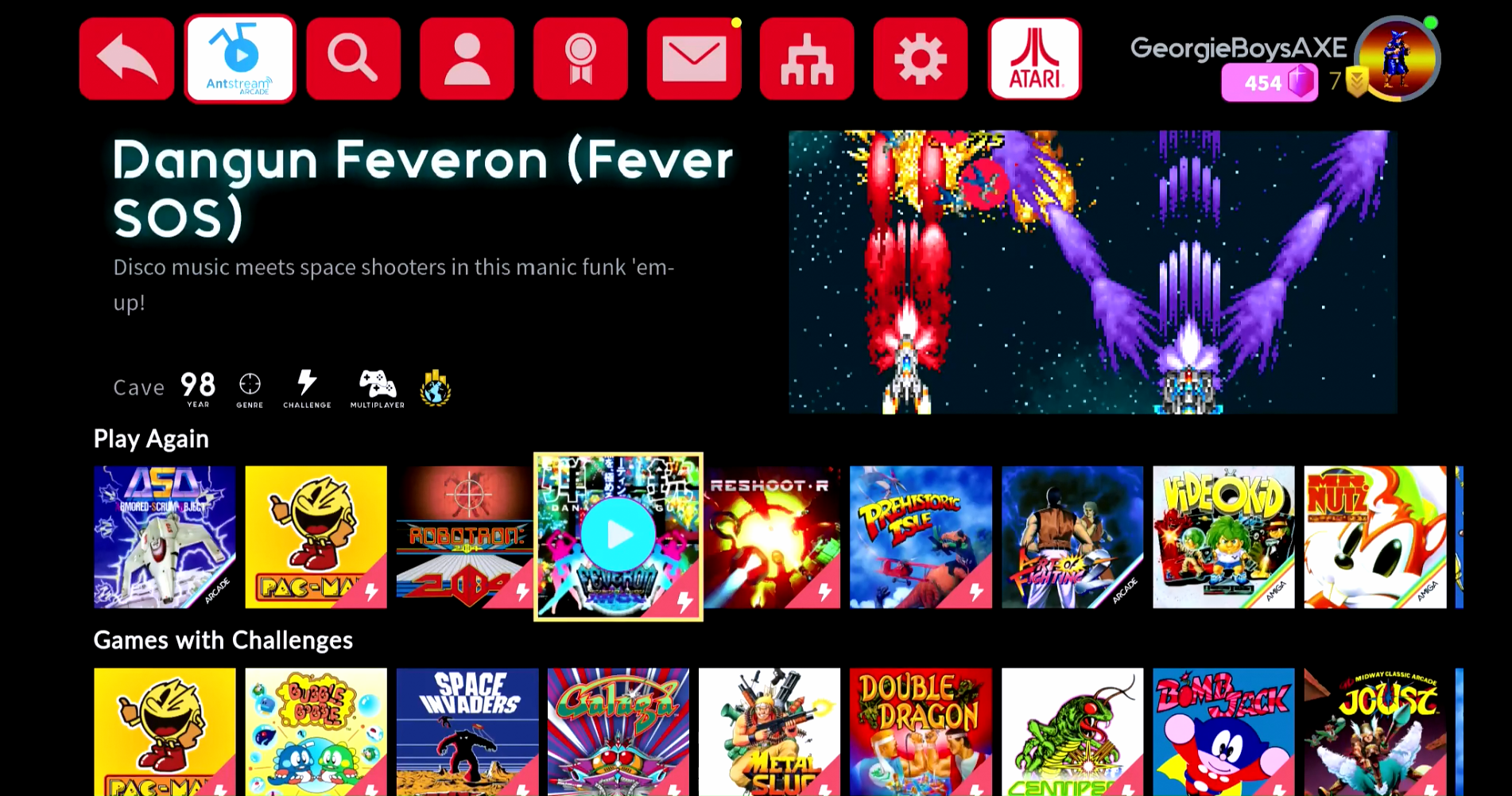
Fiddling with Antstream Arcade was certainly more enjoyable than I thought it would be as it does boast an incredible selection of software, especially for more obscure games that haven’t been digitally re-released in a commercial capacity anywhere else. Antstream Arcade currently offers a library filled with Arcade titles dating back to the eighties and 90’s with classics like Robotron: 2084 and Mappy, to some of the niche Taito and Data East titles like Growl, Liquid Kids, and Heavy Barrel. There is a load of SNK arcade titles too, even pre-Neo Geo like Prehistoric Isle and Armored Scrum Object, to late 90’s and early 2000’s stuff like Dangun Feveron and Pink Sweets: Ibara Sorekara—and don’t even get me started on the Amiga selection—an offering that I don’t think is officially available anywhere else. The concept of Antstream Arcade is great, at least when it works, as there are a significant number of games that suffer from poor emulation, and no 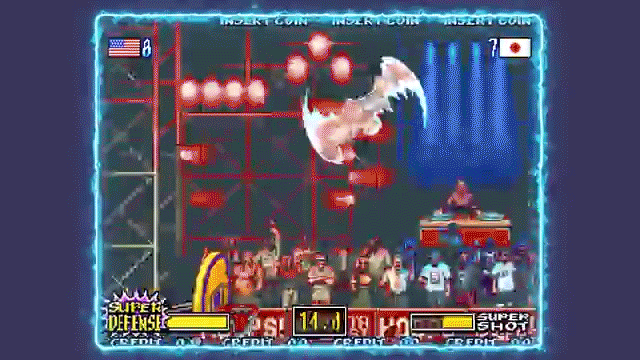 accessible options to configure their performance, but it isn’t a system seller either. This is where the VCS really suffers; there’s hardly anything on it that’s exclusive and mostly repackages software that many players already have access to.
accessible options to configure their performance, but it isn’t a system seller either. This is where the VCS really suffers; there’s hardly anything on it that’s exclusive and mostly repackages software that many players already have access to.
The last thing I should mention is what may be one of the more anticipated features of the hardware, the PC mode. The ability to run the VCS like a high-end PC certainly makes it a versatile device for those who’re looking to take advantage of running backend of executable PC software through a console frontend, but the process is much more cumbersome than you’d think. First off, as obvious as this may sound, in addition to a USB key containing the system you plan to install, you will also need a keyboard and mouse as the PC Mode won’t come equipped with a Soft-keyboard option or controller compatibility for cursor navigation to assist you with the setup. The moment you begin the PC Mode setup sequence, it literally becomes a PC-ass PC straight off of the factory line. Depending on what OS you’re looking to run, will of course determine the ease of access; the VCS currently handles the setup of either Windows 10 via Windows Creation Tool with a product key or Ubuntu if you want to keep the machine Linux all around. Regardless of which system you use though, the bios of the Ryzen GPU/APU components are encrypted, preventing users from really customizing the performance of the hardware like overclocking the RAM, but there are options to run something faster altogether. This is a move that certainly undercuts the “freedom” that Atari was boasting for those looking to dive into this particular feature, at least when it comes to working with what comes directly out of the box. I should mention that I haven’t installed any external components to the console like extra Storage or more RAM via M.2 slot for SSD or a standard SSD upgrade because I wanted this review to focus on what the Atari VCS could do stock, and because I opted to keep it stock, this process was such an immense hassle.
Relying on the internal SSD meant that I had to pre-format the OS setup drivers before flashing it to a USB key, otherwise I would run into an unavoidable error where the VCS couldn’t natively partition one of its available drives—even after I chose to reformat it from the install menu. The only workaround that I could find was to use the Windows Creation Tool to create an ISO of the setup instead, which I would then have written to a USB flashdrive using a Win-to-USB program. I was able to make some progress, but the system was only able to run as a virtual drive and I had the damnedest time trying to hard install it—it just wasn’t worth pursuing anymore after all of that nonsense.
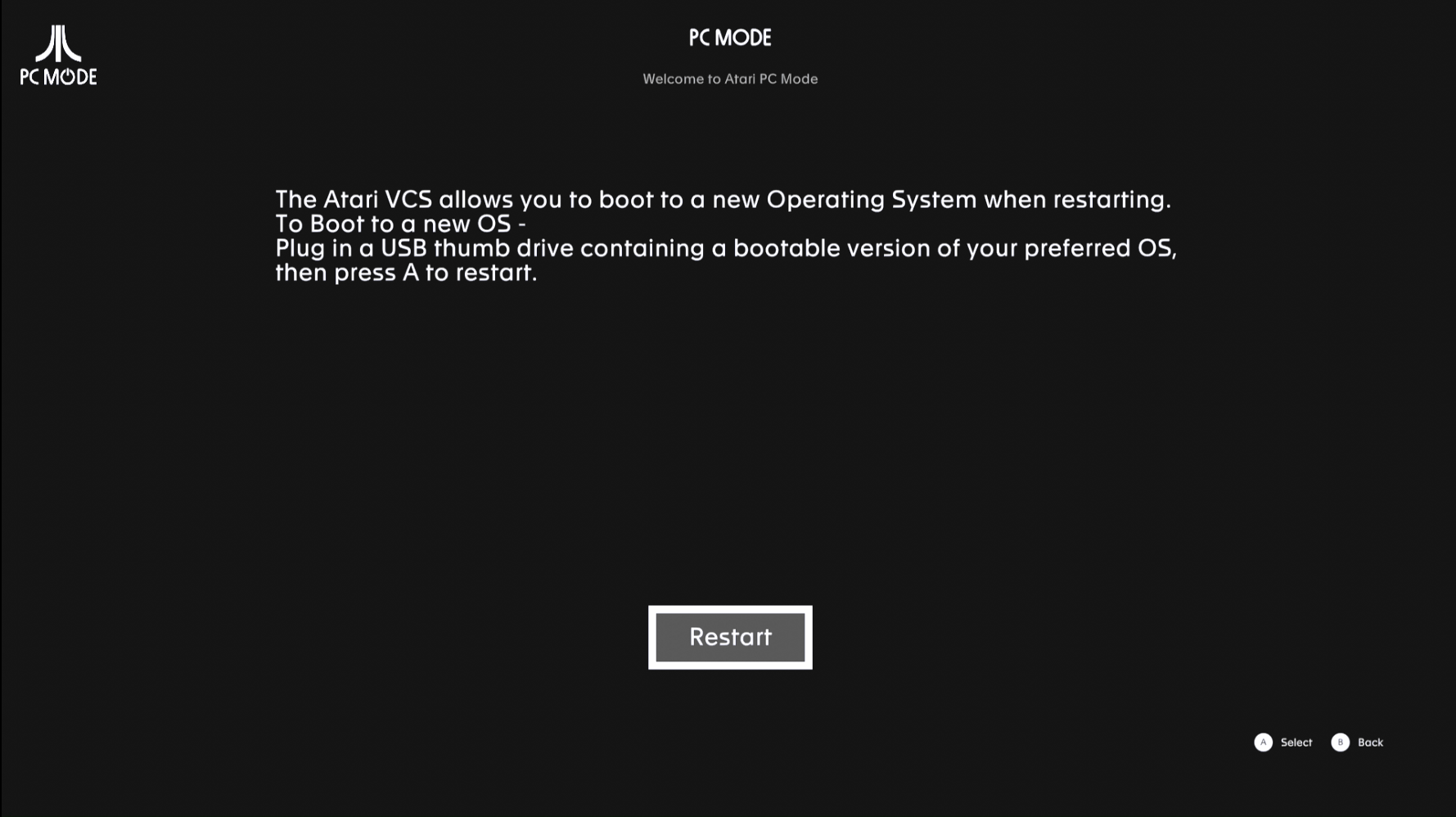
I get that those who’re the most interested in the PC Mode feature are unlikely to run what the Atari VCS is packing directly out of the box and will instinctively look towards upgrading the hardware to streamline the process, I sincerely do, but it shouldn’t be this troublesome without doing so. I’d honestly argue that the tediousness that comes with something as simple as configuring an operating system defeats whatever “accessibility” Atari had boasted with the VCS. Again, I can’t stress how silly it is to spend $300.00-$400.00 on the console itself, only to then invest a few hundred dollars more into a larger SSD or RAM expansion to beef up its utility as a PC—you’re better off buying a decent stand-alone PC at that point.
At the end of the day, I’d be lying if I said that I didn’t entirely enjoy my time with the Atari VCS—there’s a shocking amount of content to dive into, with more steadily added every other week. In its current state though, I can’t justifiably recommend it at the price the console is being sold for. If you’re looking for a way to recapture the nostalgia of Atari’s console lineage or simply looking to build a powerful emulation machine, there are better and cheaper routes to take than the VCS. As a console in its own right, the platform has little unique content to offer, and an inconsistent system performance that can falter on even the most basic of functions, the Atari VCS is just an expensive novelty at the moment.
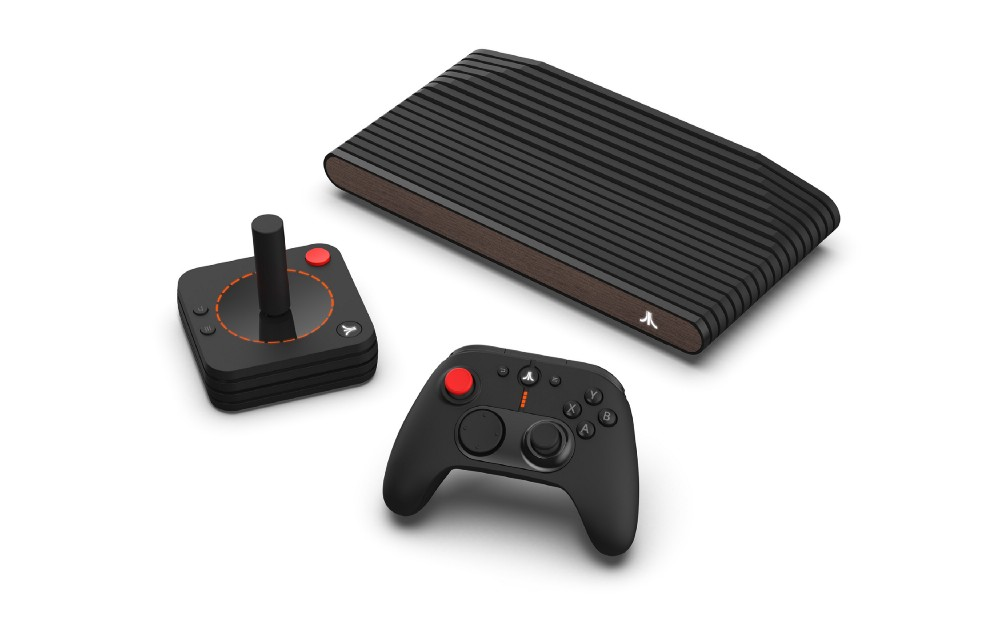 The fact that the faulty 4K output and busted wireless pairing system that has yet to receive a fix from Atari is a vexing precedent within itself, especially a week or so more into its public launch let alone the months that the Indiegogo backers have had their units. These issues aside, the VCS does have the potential to be an avenue that can cater to both indie games developers and fans of indie games on a scale that’s far more approachable than the bloated marketplaces of Steam and Nintendo eShop. The Wireless Classic Joystick also offers the system more prospective gameplay experiences that can’t be found on other platforms, but it just isn’t enough—at least for right now anyway.
The fact that the faulty 4K output and busted wireless pairing system that has yet to receive a fix from Atari is a vexing precedent within itself, especially a week or so more into its public launch let alone the months that the Indiegogo backers have had their units. These issues aside, the VCS does have the potential to be an avenue that can cater to both indie games developers and fans of indie games on a scale that’s far more approachable than the bloated marketplaces of Steam and Nintendo eShop. The Wireless Classic Joystick also offers the system more prospective gameplay experiences that can’t be found on other platforms, but it just isn’t enough—at least for right now anyway.
Until Atari proves that it can do more, it’s safe to look at the VCS as a curio; one that’s only gotten as far as it has due to the goodwill of the fans who remember the name Atari, and the prominence it once it had.





 GeorgieBoysAXE
GeorgieBoysAXE




